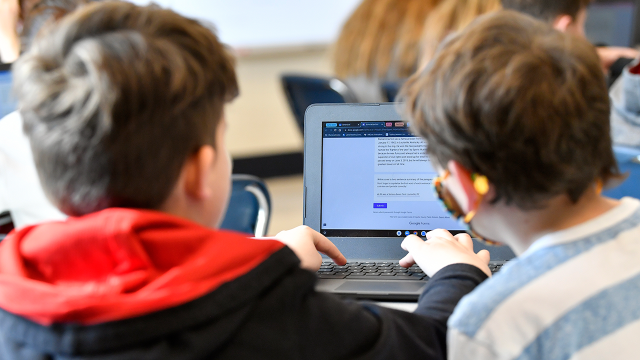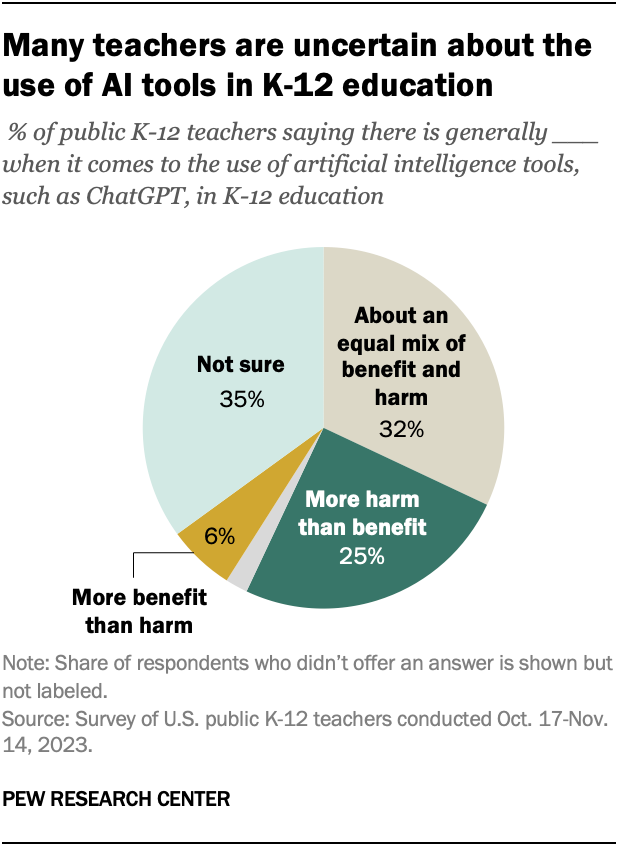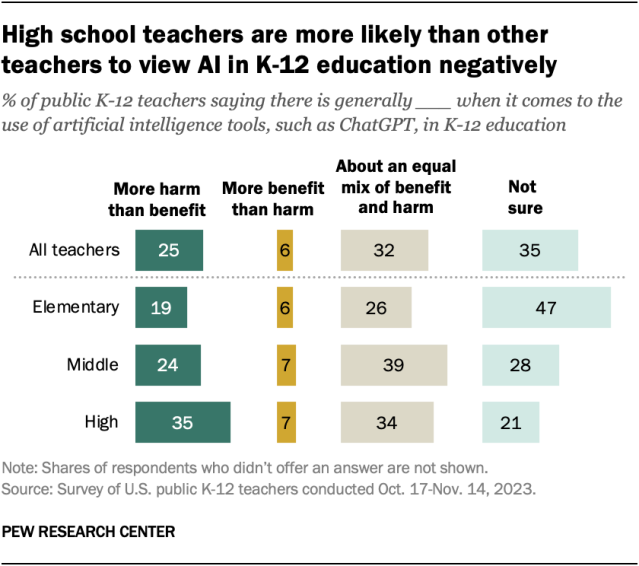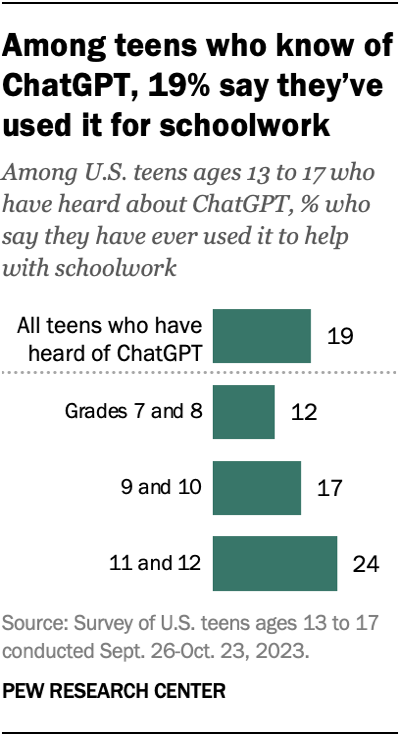
As some teachers start to use artificial intelligence (AI) tools in their work, a majority are uncertain about or see downsides to the general use of AI tools in K-12 education, according to a Pew Research Center survey conducted in fall 2023.
A quarter of public K-12 teachers say using AI tools in K-12 education does more harm than good. About a third (32%) say there is about an equal mix of benefit and harm, while only 6% say it does more good than harm. Another 35% say they aren’t sure.

Pew Research Center conducted this analysis to better understand public K-12 teachers’ views on the use of artificial intelligence tools in K-12 education. To do this, we surveyed 2,531 U.S. public K-12 teachers from Oct. 17 to Nov. 14, 2023. The teachers are members of RAND’s American Teacher Panel, a nationally representative panel of public school K-12 teachers recruited through MDR Education. Survey data is weighted to state and national teacher characteristics to ensure they are representative of the target population.
We also used data from a separate survey of 1,453 U.S. teens conducted from Sept. 26 to Oct. 23, 2023. Ipsos recruited the teens via their parents, who were part of its KnowledgePanel. The survey was weighted to be representative of U.S. teens ages 13 to 17 who live with their parents by age, gender, race and ethnicity, household income, and other categories.
The survey on teens was reviewed and approved by an external institutional review board (IRB), Advarra, an independent committee of experts specializing in helping to protect the rights of research participants. Find more details about the survey of teens here.
Here are the questions we asked teachers and teens, along with responses, and the methodology for the survey of teachers and for the survey of teens.
How teachers’ views differ by school level
High school teachers are more likely than elementary and middle school teachers to hold negative views about AI tools in education.

About a third of high school teachers (35%) say these tools do more harm than good. Roughly a quarter of middle school teachers (24%) and 19% of elementary school teachers say the same.
Fewer than one-in-ten teachers at all levels say these tools do more good than harm.
Some 47% of elementary school teachers say they aren’t sure about the impact of AI tools in K-12 education. That is much larger than the shares of middle and high school teachers who say this.
Teens’ experiences with and views of ChatGPT
In a separate survey, we asked U.S. teens about their experience with and views of ChatGPT, a generative AI tool, in their schoolwork.

Among teens who have heard of ChatGPT, 19% say they have used it to help them with schoolwork. This is more common among teens in higher grades. About a quarter of 11th and 12th graders who have heard of ChatGPT (24%) say they have used it in their schoolwork, compared with 17% of 9th and 10th graders and 12% of 7th and 8th graders.
Teens’ views on whether using ChatGPT is acceptable depend on what it’s being used for. Among teens who have heard of ChatGPT:
- 69% say it’s acceptable to use it to research new topics.
- 39% say it’s acceptable to use it to solve math problems.
- 20% say it’s acceptable to use it to write essays.
Shares ranging from 18% to 24% aren’t sure whether it is acceptable to use ChatGPT in each of these situations.
Overall, two-thirds of U.S. teens say they have heard of ChatGPT. That includes 23% who have heard a lot about it and 44% who have heard a little about it. Roughly a third (32%) say they have heard nothing at all about ChatGPT.
Note: Here are the questions we asked teachers and teens, along with responses, and the methodology for the survey of teachers and for the survey of teens.
